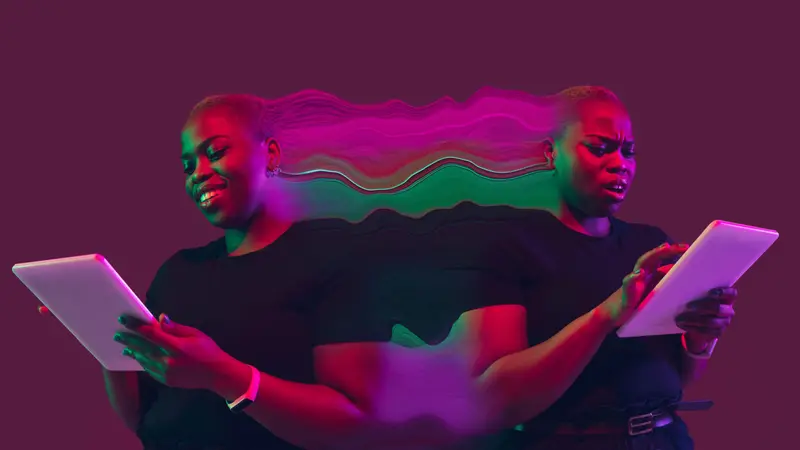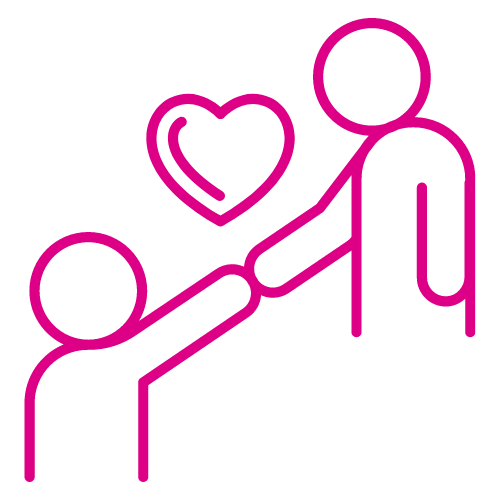

Mental and Behavioral Well-Being

Mental and Behavioral Well-Being
Breaking the Addiction to Anxiety
Anxiety is a state of both mind and body. When anxious, the mind may produce incoherent thoughts that trigger the release of the hormones and chemicals of stress. Over time, and with repetition, the brain can become very efficient at producing those stress-related chemicals.
With the habitual production of stress hormones, the body not only expects them, but eventually begins to crave them; this can be called an addiction to anxiety. As noted by Dr. Bruce H. Lipton in his book, The Biology of Belief: Unleashing The Power of Consciousness, Matter And Miracles, the brain subconsciously plans for and seeks out additional stressful situations so that the body produces the specific stress hormones that it craves. Understanding this concept is the first step in making a change.
Human responses to people, places, situations, or things are based on neural programs created from past experiences—in other words, from the stress physiology of the past. After consciously identifying one’s stress program, there is an opportunity to create a new program, a new pattern, and eventually a new reality.
Recognizing Anxiety and Stress Habits
Typical habits, or even addictions, have several things in common. First, the individual can’t picture doing the habit any other way. Second, the habit is accomplished as the result of a subconscious program the individual barely realizes is happening. Third, the body wants to keep doing it. Finally, the more it is done, the more natural the habit feels and the more it becomes ingrained in the subconscious.
The same elements can be applied to the process of anxiety and stress. Once anxiety becomes an addiction, the mind will continue to search for and create additional anxiety-producing situations to replace the one just resolved. When anxiety becomes the nervous system’s set point, the mind’s goal is to elicit another stress response and produce the hormones of stress.
Habits and Anxiety
For most people, change is hard because they have so many habits, addictions, and hardwired neural programs. Have you ever noticed that you wash and dry your body in the exact same pattern after every shower? Have you ever driven home and had zero recollection of the left-hand turn you made onto your street? Both are examples of subconscious hardwired programming. They’re habits and they take mental energy and effort to change. Try switching it up. Make a conscious effort to wash and dry in a different order or take an alternate route home from work. See how it feels. Most likely, it will feel bizarre and require a little more conscious energy and focus to break the programming.
Anxiety is no different. It’s a hardwired neural program that requires conscious effort to create new chemicals and new emotions to replace the habitual anxiety-causing ones. As an example, imagine the amount of energy it would take to force a smile when anxious and stressed out? Although it can seem impossible to initiate, it quickly gets easier because when one smiles, the muscles used to perform the action stimulate the brain to produce the chemicals of joy and happiness. The chemical production is directly connected to the contraction of the facial muscles. Smiling seems easy enough, but if one is feeling depleting emotions such as anger, depression, or anxiety, it won’t come easy.
Health Impacts of Negative Habits
It’s important to understand the impact of letting these subconscious programs control your life. Negative, depleting thoughts and emotions can literally cause sickness. There is a direct link between thoughts and the body’s ability to heal and maintain health.
Each thought elicits an emotion, and many chemical reactions occur, primarily in the brain, heart, and adrenal glands. The strength of these reactions depends on the perception and interpretation of the event. If negative emotions are produced, the chemicals produced are depleting in nature and energy draining. This means that proper cell function is impaired, and the body utilizes energy inefficiently, leading to exhaustion and dysfunction. In other words, the body functions in a state of “dis-ease.”
Eventually, when the body functions in a state of dis-ease for long periods, the dysfunction will reach a point of actual disease. Many people make themselves sick simply through their negative thoughts.
Creating Positive Habits
When default emotions are depleting and incoherent, it requires the conscious creation of renewing emotions to change the habitual programming.
It is extremely helpful to practice habits like smiling because every time it is done, the body produces the chemicals of joy rather than the chemicals of stress, and the new neural programs will be reinforced. The more things done that lead to joy and happiness, the more the addiction to anxiety is counteracted. With enough practice and effort, the body will learn how to mitigate and eliminate the stress response caused by unwanted subconscious programming and become proficient at consciously creating the release of positive and happy chemicals in the brain. By creating positive emotions such as joy, happiness, excitement, passion, relaxation, calm, relief, and peace, an individual’s perception of the world around begins to shift and create new patterns. Thankfully, the same concepts that make it possible for thoughts to be so depleting can also enable the use of thoughts to create inspiration, joy, and happiness. When thoughts are positive and uplifting, cells utilize energy more efficiently, systems function in harmony, and the body is connected to its innate intelligence.
REFERENCES
- Coherence Revolution, by Dr. Mark Halpern
- Breaking the Habit of Being Yourself, by Dr. Joe Dispenza
- You are the Placebo, by Dr. Joe Dispenza
- Transforming Depression: The HeartMath Solution to Feeling Overwhelmed, Sad and Stressed, by Doc Childre & Deborah Rozman, Ph.D.
- The Biology of Belief: Unleashing The Power of Consciousness, Matter And Miracles, by Dr. Bruce Lipton


 By
By



